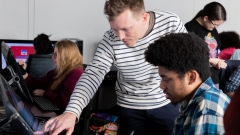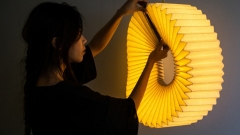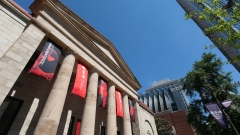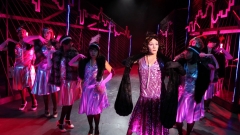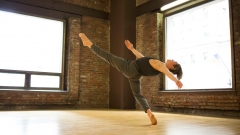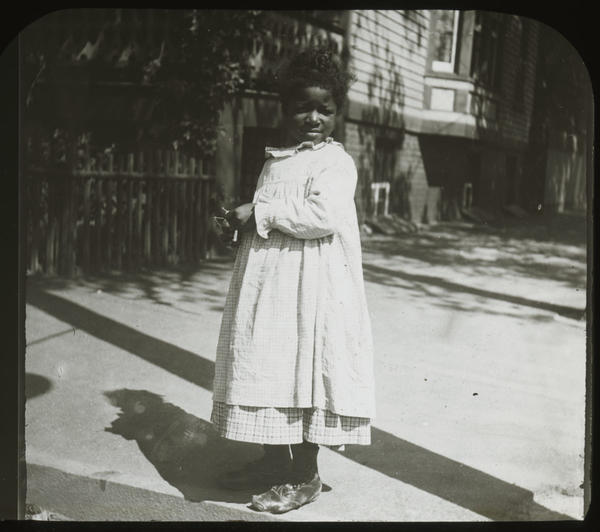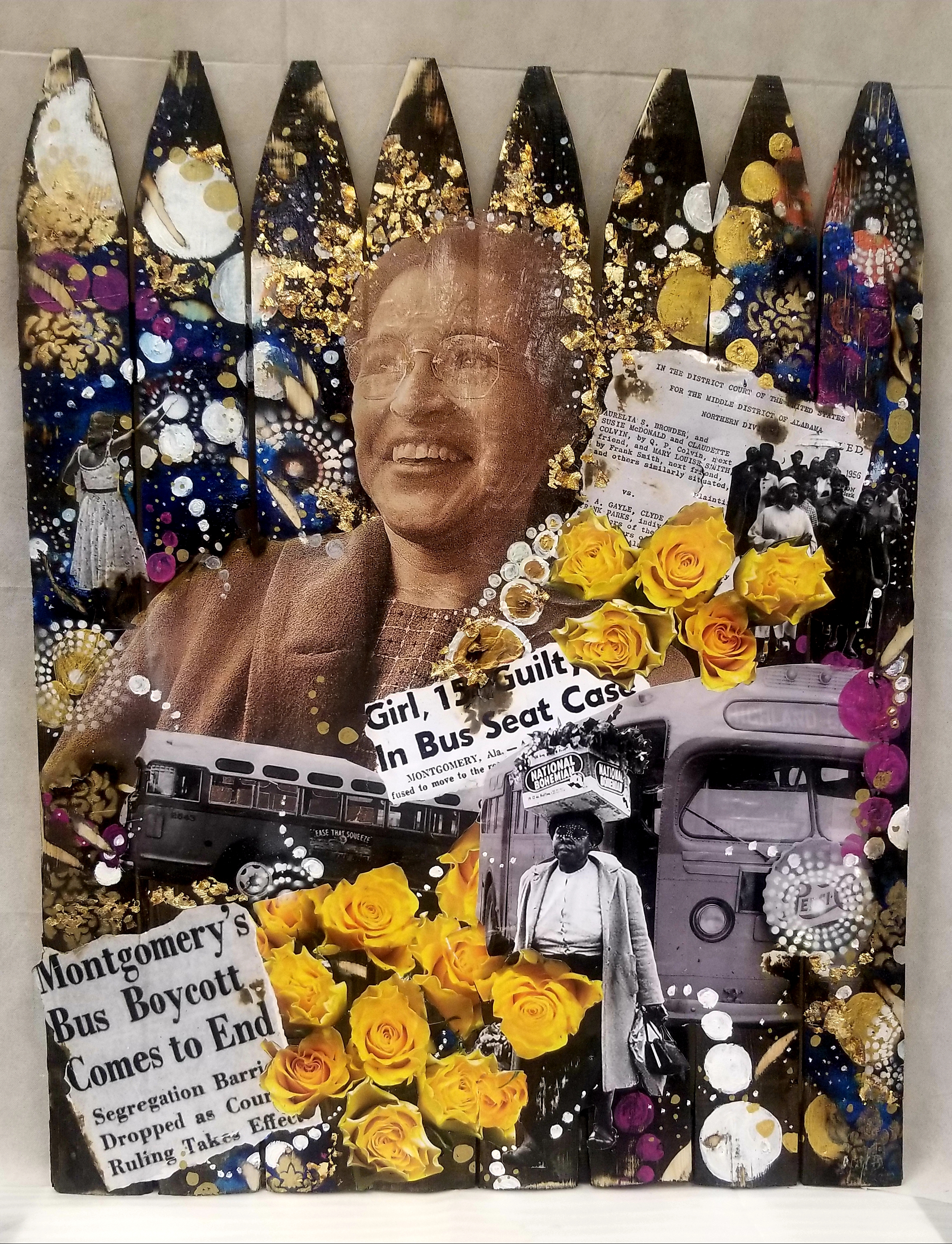Alum Featured on TIME Magazine Cover
February 26, 2021
When Lavett Ballard got an email about appearing on the cover of TIME magazine, she thought it was a joke. “I was really going to ignore it but something inside me said that if it's real, I better contact them back, just to be sure.” Sure enough, the email was real. Ballard was commissioned to create “1955 The Bus Riders” for their special 100 Women of the Year issue, released March 2020, marking the 100th anniversary of women’s suffrage.
Ballard MFA ’17 (Studio Art) is an artist, curator, art historian and storyteller. She is a Yaddo artist residency recipient, has shown her work in prominent collections such as the African American Museum of Philadelphia; the Colored Girls Museum, Philadelphia; the Grant Hill and Petrucci Family Foundation Collection of African American Art in Ashbury, New Jersey; the Jule Collins Smith Fine Art Museum at Auburn University Collections, Alabama; and was named one of the Top 10 Female Emerging Artists by Black Art in America in 2020.
Ballard carefully blends text, natural and synthetic materials, and historical imagery to write and rewrite narratives of those whose stories have either been lost or never told through their own lens. She frequently adheres her collages to wood, typically using fences as a base. Ballard said the fences are “a symbolic reference to how fences keep people in and out, just as racial and gender identities can do the same socially.” Through the deconstruction and layering of imagery, Ballard is able to present familiar historical photographs in a way people have not seen delivered before. “My aim is to take a theme or a story in general and twist the context of what I'm trying to say, so that hopefully, it sparks with everyone universally,” she said.
Ballard initially wanted to be a painter while studying at UArts. Although a talented painter, she grew frustrated when she couldn’t capture the same realism as painters like Kehinde Wiley. That’s when one of her professors suggested that she start making collages. Collages allowed Ballard to accomplish what she couldn’t through painting. “I knew the imagery I wanted to do was going to be women,” she recalled. “When I was young going to museums, [I] didn’t see many images of African Americans, much less women.” She continued, “if [I] did see women, [I] always knew that the image was not made by women, it was made by men. I didn’t see Black women painting or creating artwork of Black women. I wanted to be able to give these women a whole new narrative.”
During her time at UArts, Ballard found inspiration on a trip to the Library Company of Philadelphia. She said that when she was looking through their catalogs—which comprise manuscripts and other printed materials—for an assignment, she noticed that there weren’t many photos of African American people. She was told by a librarian that a lot of the photos of African Americans that were in [their catalog] had been taken by early turn-of-the-century photo clubs.
Ballard explained that “cameras could be purchased by everyday people, and they would go into parts of Philadelphia that had mostly African American residents and they would practice their photo skills on Black people. This was because our skin color was a good way to test their photo photography skills.” Ballard was intrigued, as this changed how she looked at the photos. She then wondered how they handled lighting, who they chose for the photo, and why they chose a specific person. “It was clear that a lot of these [subjects] were not wealthier class people, they were mostly poor people,” Ballard said.
During this trip, she found a photo that she still uses today, called “A Study of Chocolate.” “It’s an image of a little girl, she looks like she’s about eight years old and she's wearing a very nice clean dress with a pinafore,” she explained. “Her shoes look really grubby, like they had been passed down from brother to sister to whomever, but otherwise she was very well kept. She's smiling at this camera and has something in her hands—a piece of chocolate.” Ballard says she read the notes from the photographer which read, “I traded a piece of chocolate for this smile.”
The note sparked something in Ballard. She wanted to flip the narrative the photographer had given the photo. She said there was something oppositional about the girl’s smile that made her think, “whoever this photographer was thought that he was getting over on this little girl, because he only had to give up a chocolate bar. But for that girl, it was maybe the first piece of chocolate she ever had to herself. She’s looking at him like, ‘You think you’ve got something for me, but I really got something better from you.’”
Ballard is always on the lookout for great images. “A main part of my practice is research,” she says. “Most of my week is research.” Using other people’s photographs also means she has to remain adaptable. While working on “1955 The Bus Riders,” Ballard wasn’t able to obtain permission for some photos. “I had to work around it,” she said. “That’s when I decided to use text instead, so it worked out in the end.”
Ballard describes her Time cover experience like giving birth. “It felt like it took forever. But at the end you're like, ‘Oh, look at that, look at what I made!’ And then they throw up on you.” She said the “throw up,” or reality check, for her was, “the fact that the magazine got released the first week of quarantine.” Ballard said it was “bittersweet” to have her issue hit newsstands while everyone was stuck at home. In addition to the cover by Ballard, Time released multiple different covers for the issue. She pointed out that some states released issues with Oprah Winfrey on the cover, others featured Jackie Onassis or Ruth Bader Ginsburg. “1955 The Bus Riders,” however, was one of two images included as an interior cover in every issue, no matter the region.
The COVID-19 pandemic hasn’t slowed Ballard down, though she did get locked out of her studio. While working from the confines of her guest room, she started creating smaller-scale pieces. She calls these pieces her Quarantine Chronicles. Most of that collection, along with other works will be displayed at Syracuse University Community Folk Arts Center through March 20, 2021.

